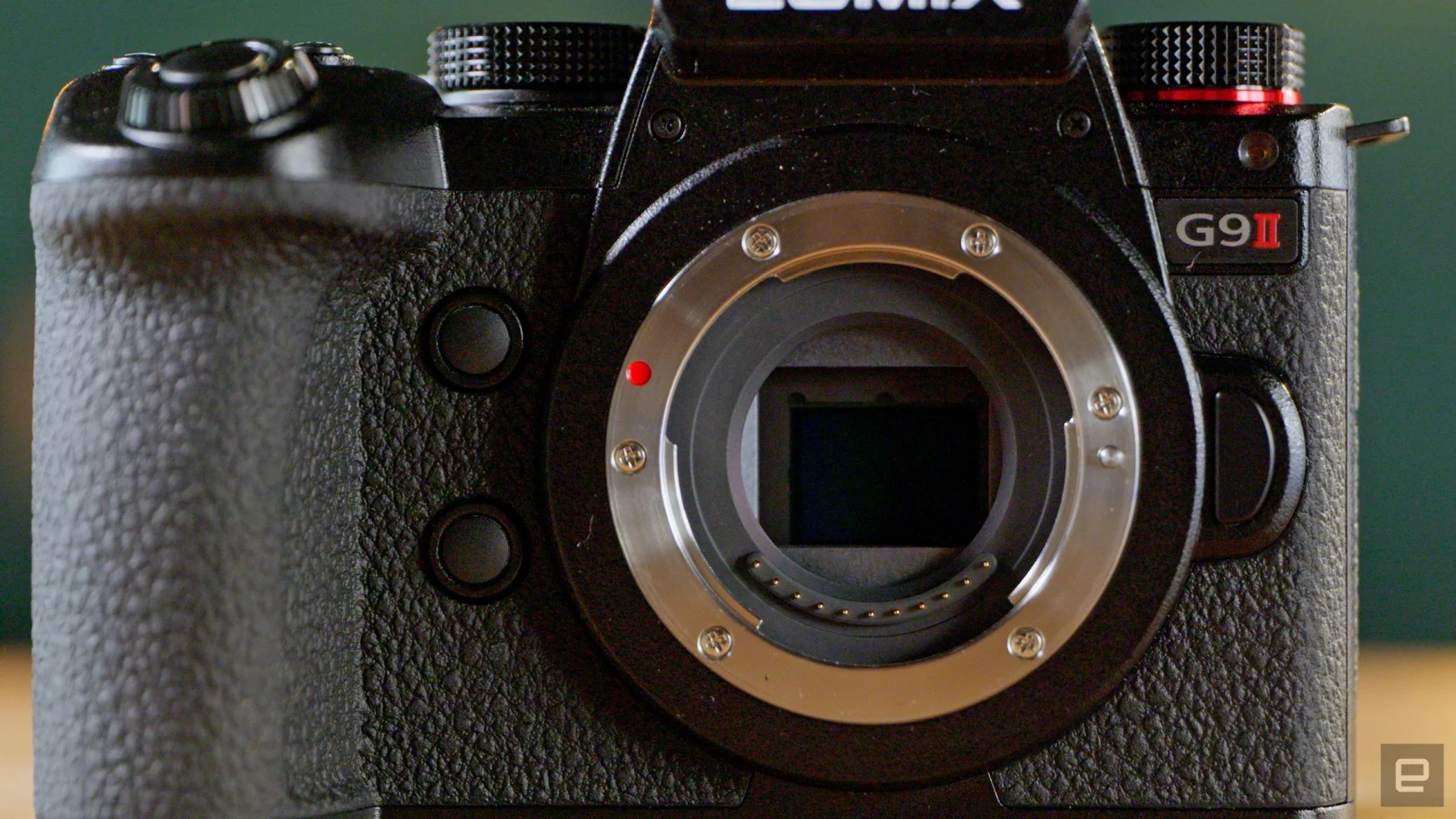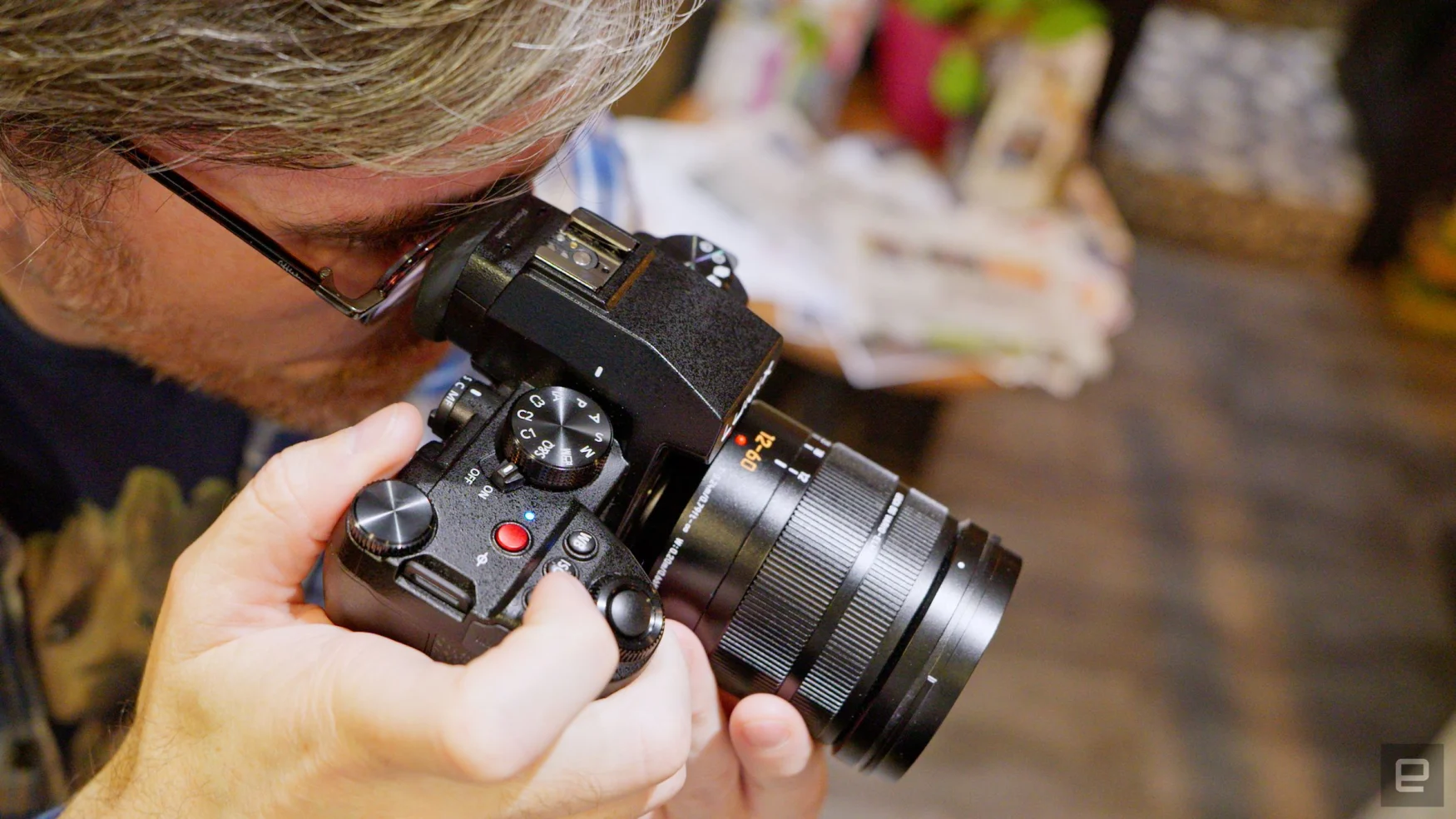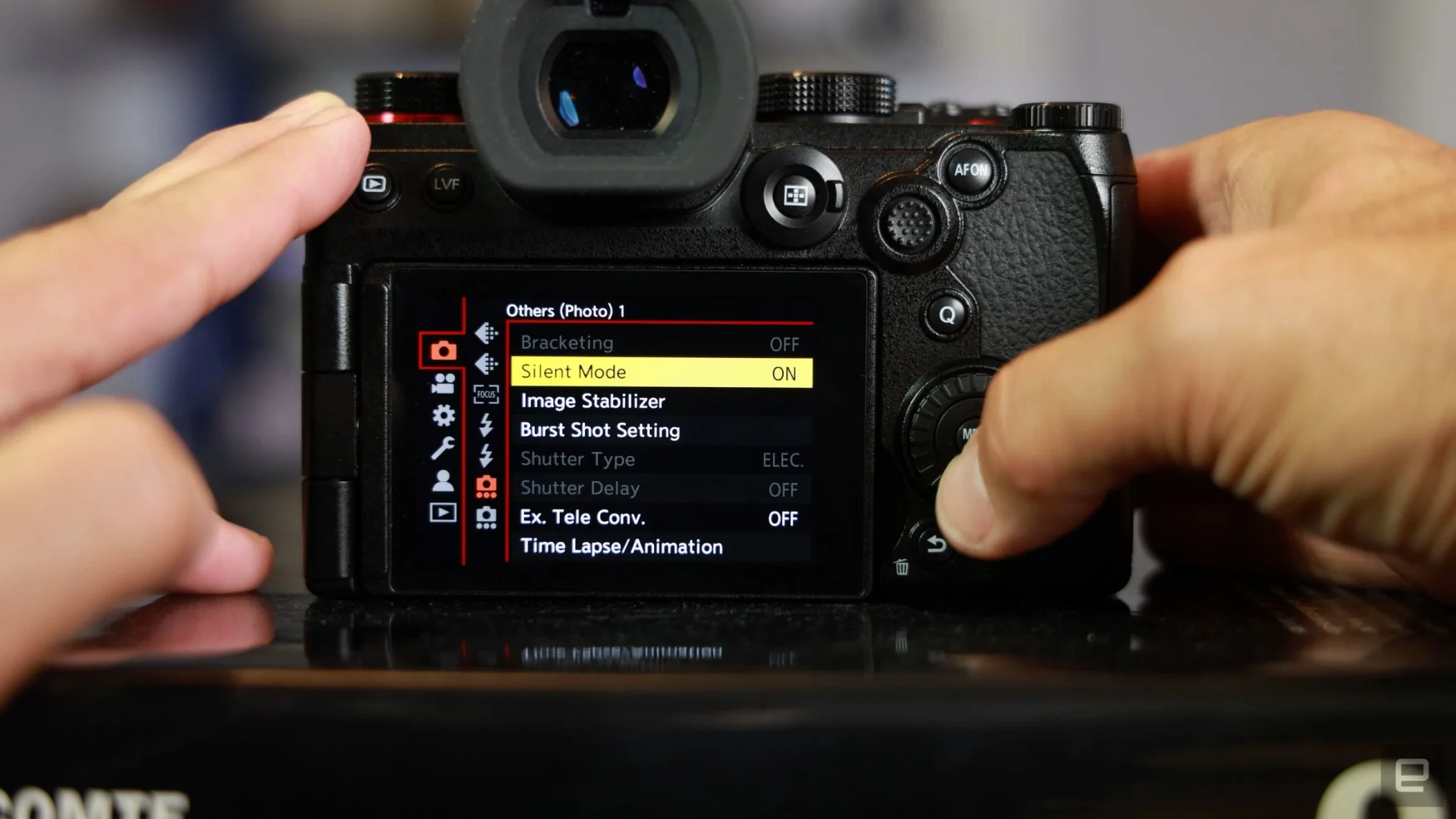Intro
Panasonic’s 25.2-megapixel Lumix G9 II arrived with a lot of fanfare, as it’s the company’s very first Micro Four Thirds camera with hybrid phase-detect autofocus. And from the first day of launch, Panasonic promoted it as the ultimate small-sensor wildlife and action camera, thanks to the hyper-fast 60 fps shooting speeds and relatively high resolution.
However, I (and others) noticed that it held a lot of promise for content creators, too. The superior hybrid AF is also better for video than past models and it offers up to 5.8K 60p video, 4K at 120p, incredible stabilization and even SSD ProRes capture. On paper, it’s superior to the company’s vlogging-dedicated GH6, though it lacks the latter’s fan and a few other minor features.
Pros
60 fps burst speeds Improved autofocus Excellent stabilization Good image quality High-end video specs
Cons
Mediocre battery life Autofocus still behind rivals
That gives the G9 II a bit of an identity crisis. Is it the ultimate content creator camera, an action shooter’s dream or the ultimate hybrid camera? To find out, I’ve got a retail camera with the final production firmware and RAW photo support.
Body
Physically, the G9 II is more like the full-frame S5 II than the six-year-old G9. Gone is the softer, rounded G9 design, in its place a more angular, hard-edged body. It’s relatively large for a Micro Four Thirds camera, weighing 658 grams (OM system’s OM-1 weighs 599 grams), though it has exactly the same heft as the original G9.

Subscribe to the Engadget Deals Newsletter
Great deals on consumer electronics delivered straight to your inbox, curated by Engadget’s editorial team. See latest

Please enter a valid email address
Please select a newsletter
By subscribing, you are agreeing to Engadget’s Terms and Privacy Policy.
The design is more businesslike than pretty, but I like the practicality of it. The ridged grip is secure, and it has every control you need, including a joystick, front, back and rear control dials, a setting dial, shooting dial and numerous buttons. A few things have changed from the G9, as the dual dial on the left is now just a single shooting dial, the on/off switch is in a better location and it has a front shooting dial. This is now a template for Panasonic cameras, so if you’re used to models like the GH5, you’ll adapt quickly.
The menus are easy to use as well, but I wish it had a dedicated photo/video switch with separate controls. For instance, if you set V-log on video, that setting carries over to photos too – and you definitely don’t want that. To keep photos and video apart, you’ll need to employ one of the custom “C” dial settings.
Gallery: Panasonic G9 II mirrorless camera review | 24 Photos
Gallery: Panasonic G9 II mirrorless camera review | 24 Photos
The 1,840K dot LCD display fully articulates for vloggers and self-shooters, of course, and most controls are available by the touchscreen. It comes with a decent 3,680K dot OLED viewfinder that’s on par with other cameras in this price range, like Fujifilm’s X-T5. I’d prefer a little more EVF resolution on a flagship camera, particularly for bird shooting, but it’s not bad.
The G9 II uses the same battery as the S5 II, allowing for a middling 390 shots on a charge. Video endurance is better than the GH6, though, lasting nearly 100 minutes at 4K 60p.
A feature I didn’t expect is SSD recording. That lets you record high-bandwidth ProRes files to an external drive via the USB-C port. It does require some rigging, but is an amazing time saver, as you can edit the files directly with no transcoding needed. It also has a pair of SD UHS-II card slots, but no support for CFexpress like the GH6.
There’s a nice full-sized HDMI port, but the G9 II doesn’t yet support RAW video recording. You also get microphone and headphone jacks, along with a USB-C port that supports 10Gbps transfer speeds and fast PD charging.
Performance

Steve Dent for Engadget
With a new sensor and processor, the G9 II is a speed demon – but this is Panasonic’s first crack at phase-detect autofocus. That does show at times, via issues like occasional lag and an AI feature set lacking compared to rivals.
It can shoot RAW plus JPEG bursts with the mechanical shutter at up to 10 fps, or 60 fps in the SH60 electronic shutter mode with continuous autofocus. If you don’t need that kind of speed (and don’t want to fill the buffer up too rapidly), it also offers 20 fps bursts in electronic mode. Panasonic also introduced a pre-burst mode, which continuously cycles bursts through 1.5 seconds before you fully press the shutter – helping you catch a shot even if you’re a bit slow.
It has a large buffer that allows for over three second bursts at 60 fps and non-stop shooting with the mechanical shutter. However, it takes longer than other cameras to clear the buffer – up to a minute in some cases – due in part to the slowish SD ports. This can be quite annoying, as the camera effectively stops working while the buffer clears.

Steve Dent for Engadget
Still, that kind of speed is impressive – provided the autofocus can keep up. Luckily, the new phase-detect system on the G9 II is mostly up to the task. Shooting at 60fps with eye-detection enabled, the large majority of my shots were in focus with a subject running toward the camera.
It wasn’t quite as reliable for more distant subjects when using Panasonic’s new 200-800mm equivalent telephoto, and didn’t initially lock in as fast as I’d like. The eye detect autofocus, however, was generally reliable for both human and animal subjects. It lacks a specific setting for birds, but the system does seem to automatically switch between birds and deer, for instance, if you’re shooting in the woods.
It can also track motorcycles and cars, and though I didn’t test it on the former, it does a good job tracking vehicles. There’s no “auto” setting either like you’ll find on Canon’s latest models, so you have to go in and switch focus modes manually if you’re shooting a pet and its owner.

Steve Dent for Engadget
In other words, Panasonic is off to a good start but has a way to go to catch up to Sony’s ultra-reliable and more intelligent AF. I expect that to improve over time, though.
If you’re concerned about rolling shutter in electronic mode, don’t be. Readout speeds are fast for a non-stacked sensor, so skew and other issues aren’t an issue except in extreme situations like airplane propellers.
Panasonic has included the same in-body stabilization system as the GH6, so it can reduce shake by up to 8 stops, or 7.5 stops with ultra telephoto lenses. It’s very effective for shooting handheld, letting you grab photos at a quarter second or less with no blur.
Image quality
The G9 II has the same 25.2-megapixel resolution dual gain sensor as the GH6 but image quality for photos is better, with less noise at lower ISO levels.
Gallery: Panasonic G9 II review sample images | 30 Photos
Gallery: Panasonic G9 II review sample images | 30 Photos
With five extra megapixels over the original G9, it takes sharper shots and provides some extra detail over rivals like the OM-1 – letting you crop in a bit more. JPEG colors straight out of the camera look great and require little retouching.
The dual-gain sensor also makes it good in low light for a Micro Four Thirds Camera. Very little noise is visible up to ISO 1600, and it’s well managed beyond that up to about ISO 12,800, as long as you expose correctly. That said, it’s always better to have more light with a small-sensor camera, as noise levels can quickly get out of control, particularly with underexposed shots.
RAW files are relatively easy to edit and give you room to dial down highlights or bring up detail in shadows. Again, the small sensor puts it at a disadvantage to full-frame cameras in that regard, however, as more noise will appear at higher ISOs.
>>> Read full article>>>
Copyright for syndicated content belongs to the linked Source : Engadget – https://www.engadget.com/panasonic-g9-ii-review-its-best-micro-four-thirds-camera-to-date-120020562.html?src=rss































